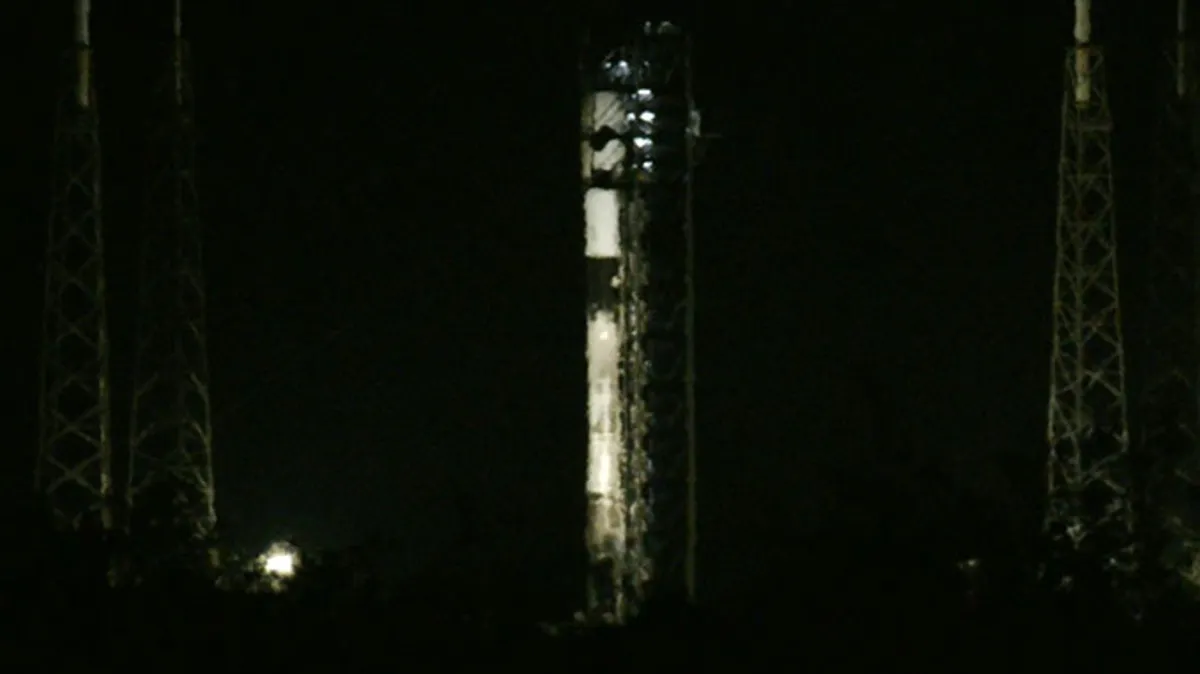
As of 5:58 p.m. EDT, SpaceX has officially postponed the T-0 liftoff time for its upcoming mission. The aerospace company is gearing up to establish a new rocket reuse record with its highly anticipated midnight flight carrying Starlink satellites. The Falcon booster, designated with tail number 1067, is set to launch for an unprecedented 27th time, reinforcing its status as the leader in SpaceX’s fleet of rockets.
The launch will support the deployment of 27 Starlink V2 Mini satellites into low Earth orbit. The planned liftoff from Space Launch Complex 40 at Cape Canaveral Space Force Station is scheduled for Monday, April 14, at 12 a.m. EDT (0400 UTC). For those interested in following the event, Spaceflight Now will provide live coverage starting approximately one hour before the launch.
According to launch weather officers from the 45th Weather Squadron, there is a greater than 95 percent chance of favorable weather conditions at the time of liftoff. Meteorologists predict that Sunday’s launch opportunity will align with a series of days characterized by “several days of dry weather with seasonable temperatures across the Spaceport.”
The forthcoming launch marks the 27th mission for booster B1067, which first took to the skies nearly four years ago on June 3, 2021, during the CRS-22 mission. Notably, the last three missions for this booster have all been dedicated to supporting SpaceX’s expanding Starlink satellite constellation.
Approximately eight minutes following liftoff, B1067 aims to land on the droneship, Just Read the Instructions. If successful, this will mark the 115th landing on JRTI and contribute to the 431st successful booster landing overall for SpaceX. Moreover, the Starlink 6-73 mission will also represent the 460th launch of a Falcon 9 rocket to date, showcasing SpaceX's significant advancements in space technology and operations.
Stay tuned for more updates as we approach this milestone launch, which not only highlights SpaceX's commitment to satellite deployment but also underscores the importance of sustainable rocket reuse in the aerospace industry.